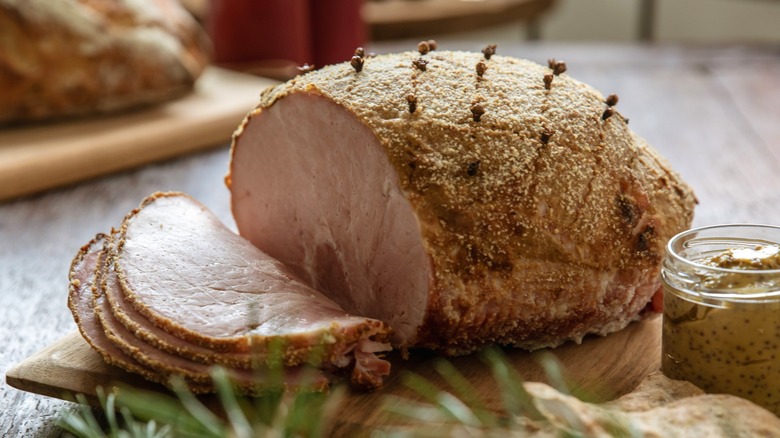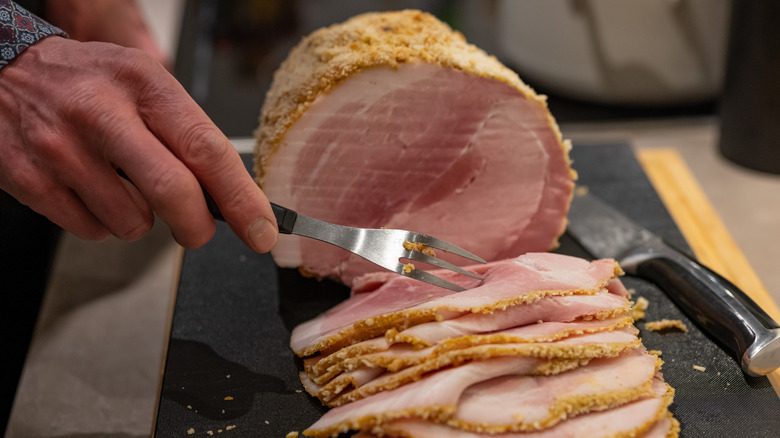In Sweden, Christmas Ham Is Boiled, Cold, And Delicious
Though cold ham may not be the first dish that comes to mind when you think of holiday celebrations, that is exactly what is found on many dinner tables in Sweden for Christmas. The tradition started sometime in the 1600s, and while ham was initially reserved for the rich upper class, the meat found its way to a wider audience in the 1800s and is still served today. First boiled, then served cold.
While Swedes are perhaps unique in serving their Christmas ham intentionally cold, the practice of noshing on ham for holidays is believed to have started with Germans who would sacrifice boars during special festivals and harvests. The pagan tradition was kept alive by Christians who organized feasts around the Christmas holiday. Unfortunately for many Swedes, meat originally wasn't permitted until Christmas Day by the Catholic church, and any meat cravings had to be ignored until the holiday. Devout Swedes abstained until Christmas morning, combating hunger pangs with porridge and lutefisk, instead. The ham that was finally sliced and served was delicious, however, as these special Christmas pigs weren't slaughtered until just before the holiday, lending juicier, fresher pieces of meat than any animal that was packed in salt for several months beforehand.
Get the mustard ready
Today, Christmas ham, known regionally in Sweden as julskinka, generally occupies the main role of a Christmas spread, also called a julbord. To prepare julskinka for serving, ham is boiled, cooled, then glazed with a topping made with mustard and breadcrumbs. Without religious restrictions dictating when ham can be eaten, ham is often boiled a day before Christmas Eve. Some cooks take a shortcut by buying a pre-boiled ham and glazing it just before the holiday feast. For Swedes boiling hams in their kitchens, the vat of liquid in which the ham has been cooked is often set aside and used to make a salty sauce for dipping bread.
Once boiled, a generous coating of egg yolks and mustard is swiped over the ham, providing a sticky surface for fine breadcrumbs to stick to. Once coated in the sauce and crumbs, the ham is set into an oven to brown before being cooled and served in thin slices. Should you try this version of cold ham at home and find yourself with leftovers, slices of this flavorful dish can easily appear at the breakfast table the next day as a topping for open-faced sandwiches made on rye crisp bread and complemented with Swedish mustard sauce, a common ingredient found in many Swedish kitchens. Served at dinner or lunch, Swedish potato salad could also make a fine companion for this tasty dish.

